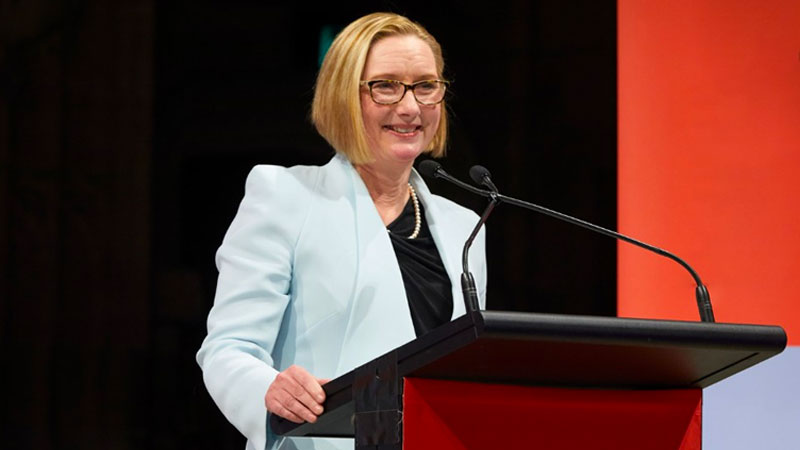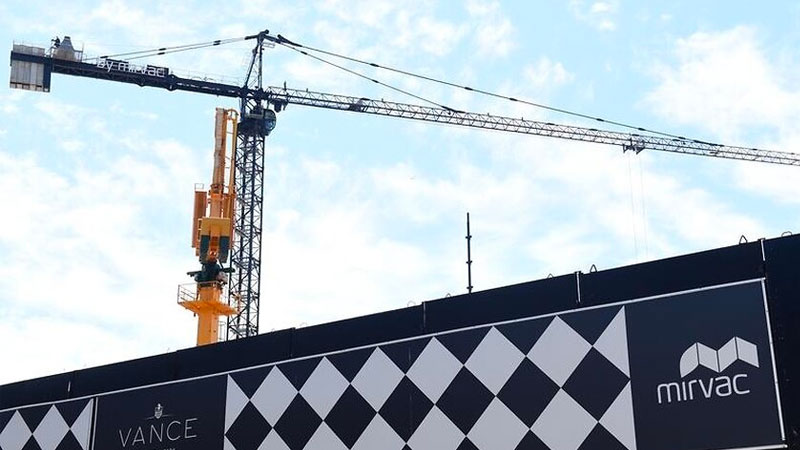Mirvac Shows Resilience Despite Residential Blip
The continuing strength of office and industrial property markets has pushed Mirvac’s profit above $1 billion for the fourth consecutive year, despite residential market headwinds.
Mirvac has offset slow settlements in its residential portfolio by leveraging office assets to “place it in good stead”, chief executive Susan Lloyd-Hurwitz says.
However, the diversified property group, which has seen its stock rise around 50 per cent since a low in November, reported a net profit of $1.02 billion for the 12 months through June, down from $1.09 billion a year earlier.
The company pointed to its earnings from residential building — which fell 34 per cent from the previous year to $201 million — for the hit and underscored the soft housing market. Mirvac said the result was expected and down to fewer apartment lot settlements.
Nonetheless, a strong performance in the group’s office and industrial business offset the slump in its residential arm — supported by the concentration of its portfolio in premium towers in Sydney and Melbourne, where vacancy remains low.

“We are now Australia’s second-largest office manager, with $15 billion of assets under management,” Lloyd-Hurwitz said.
“We have successfully created one of Australia’s youngest and lowest capital expenditure portfolios. Our young, low capex portfolio attracts high calibre customers who typically prefer long lease periods.”
Its office and industrial portfolio has continued to deliver a much-needed passive income for the group as it rides out the residential downturn, with revenue for the year to June 72 per cent higher than the previous financial year.
Key highlights for the office division included the completion of 664 Collins Street in Melbourne and 477 Collins Street which topped out in July.
Earnings before interest and taxes from Mirvac's office and industrial division rose 26 per cent and its retail segment edged up 4 per cent.
Mirvac's industrial division is also healthy with the company completing and fully leasing its new industrial estate, Calibre at Eastern Creek in Sydney's west.
The group’s warehouses are 99.7 per cent full and have a weighted average lease expiry of 7.7 years. Around 91,700sq m of industrial space was leased by Mirvac over the financial year.

“The strength and resilience of our business were evident throughout the year,” Lloyd-Hurwitz said.
“While recent months have seen some potential signs of recovery, there is no doubt the housing market deteriorated throughout the financial year.
“However, averages mask the significant variations between sub-markets. They also ignore the superior quality of the Mirvac offering.”
Mirvac said its pipeline of commercial developments had an estimated end value of more than $2 billion with notable projects at 80 Ann Street in Brisbane and 477 Collins Street in Melbourne expected to add a further $90 million in recurring net operating income.
At the redeveloped Australian Technology Park, now called South Eveleigh, anchor tenant Commonwealth Bank is on course for a staged move-in following the completion of two buildings.
Mirvac’s underlying profit, the figure on which it calculates dividends, was $631 million, up 4 per cent from $608 million the previous financial year.
The group provided operating earnings per security guidance of between 17.6 to 17.8 cents for the 2020 fiscal year, projecting further growth between 3 to 4 per cent and a 5 per cent increase in its distribution to 12.2 cents a share.
















